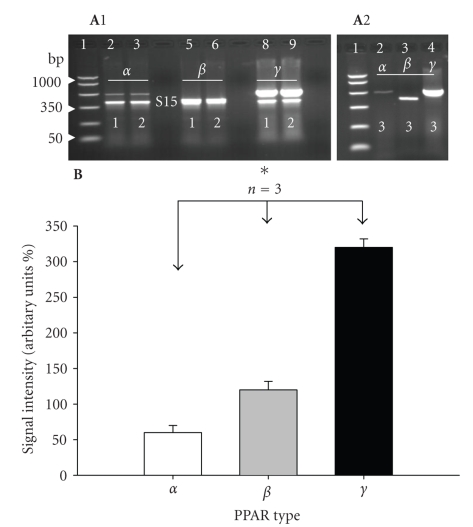Figure 1.
(A1) and (A2) RT-PCR amplification of three PPARs (α, β, and γ) from the body of the penis of three (1, 2, and 3) normal adult (120 days) control rats. (A1) Shows coamplification of PPARs (α, β, and γ (upper bands) and S15 (small ribosomal subunit protein as housekeeping gene, lower bands) in two representative rats (1 and 2). PCR markers were included in lane 1. Expected band sizes for S-15, PPARα, PPARβ, and PPARγ were 361, 492, 390, and 533 bp, respectively. Identities of amplicons were further confirmed by sequence analysis (see Section 2). Note that the ampilicons for PPARβ and S15 in lane 5 and 6 were overlapped (compare run for PPARα, PPARβ, and PPARγ without S15 shown for rat 3 in (A2). In all rats note the predominant expression of PPARγ. 15 μL PCR products were loaded per each lane. (B) Graphic representation of signal intensity for PPARs showing predominant expression of PPARγ. Transcript levels were normalized to the levels of S15 housekeeping gene. To calculate the intensity for PPARβ the mean intensity of S-15 in lanes 2, 3, 8, and 9 in Figure (A1) was subtracted from the combined intensity of PPARβ + S15 in lanes 5 and 6 to obtain the intensity of penile PPARβ for rat 1 and 2, respectively. *P < .05.

